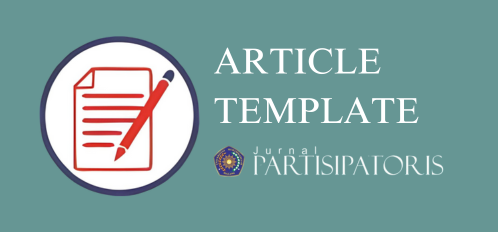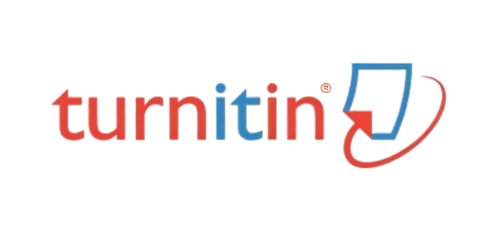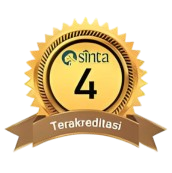The Strategy of Rural Tourism Development Based on Green Economy Concept (A Study on Gubugklakah Village in Malang, East Java – Indonesia)
DOI:
https://doi.org/10.22219/jp.v4i2.26329Abstract
The purpose of the study was to examine how Gubugklakah Village becomes an International tourism object based on Green Economy concept. This study applied a qualitative design. The data from this study were analyzed comprehensively and descriptively. The results of the study showed that Gubugklakah Village has successfully performed Green Economy concept as a tourism object due to its consistency in providing an eco-friendly environment, natural resource, and human resource..
Downloads
References
Berg, Bruce L.. 2004. Qualitative Research Methods for The Social Sciences. Bos-ton: Pearson Education.
Lexey, Moleong. 2001. Metodologi Penelitian Kualitatif. Bandung: Remaja Rosdakaria.
Makower, Joel, and Cara Pike. 2009. Strate-gies for the Green Economy: Opportunities and Challenges in the New World of Business. New York: McGraw-Hill.
M. Rahmat Yananda & Ummi Salamah (ed.). 2014. Branding Tempat: Membangun Kota, Kabupaten, dan Provinsi Ber-basis Identitas. Jakarta: Makna Infor-masi.
Deputi Sumber Daya Alam dan Lingkungan Hidup. 2012. Langkah Menuju Ekonomi Hijau Sintesa Dan Memu-lainya. Jakarta: Kementerian Perencanaan Pembanguan Nasional, Badan Perencanaan Pembangunan Na-sional.
Pariwisata-Sebuah Industri Global, diakses http//Wol.jw.org/id/wol/d/r25/lp-in/102002084 tanggal 10 Februari 2017.
Perkembangan Bulanan Wisatawan Mancanegara, 2010 – 2014 di akses http://www.kemenpar.go.id/userfiles/file/PERKEMBANGAN%20BULANAN%20WISATAWAN%20MANCANEGARA,%202010%20-%202014.pdf pada tanggal 14 Februari 2017.
Putnam, Robert D. 1988. “Diplomacy and Domestic Politics : “The Logic of Two Level Games”, International Organiza-tion, Vol.42 no.3 , Summer.
Rencana Strategis Disbudpar, diakses http://disbudpar.malangkab.go.id/konten-22.html pada tanggal 14 Februari 2017.
UNEP. 2014. Using Indicators for Green Economy Policymaking.
Jumlah Pengunjung Bromo-Semeru Melonjak, diakses : https://travel.tempo.co/read/493046/jumlah-pengunjung-bromo-semeru-melonjak , diakses pada 18 Desember 2017.
Jalur pendakian semeru penuh sampah relawan dan TNBTS bersih-bersih, diakses me-lalui : http://surabaya.tribunnews.com/2015/01/17/jalur-pendakian-semeru-penuh-sampah-relawan-dan-tnbts-bersih-bersih , diakses pada 18 Desember 2017.
Langkah Menuju Ekonomi Hijau : Sintesa dan Memulainya, Deputi Sumber Daya Alam dan Lingkungan Hidup, Kemen-terian Perencanaan dan Pembangunan Nasional, Badan Perencanaan Pem-bangunan Nasional, Jakarta, 2012.
Undang-undang Republik Indonesia Nomer 10 Tahun 2009 Tentang Kepa-riwisataan, diakses http://isd-indonesia.org/wp-con-tent/uploads/2015/01/TourismandTravel-RelatedServices-No8.pdf
Downloads
Published
How to Cite
Issue
Section
License

This work is licensed under a Creative Commons Attribution-ShareAlike 4.0 International License.
Authors who publish with Jurnal Partisipatoris agree to the following terms:
- For all articles published in the Jurnal partisipatoris, copyright is retained by the authors. Authors give permission to the publisher to announce the work with conditions. When the manuscript is accepted for publication, the authors agree to the automatic transfer of non-exclusive publishing rights to the publisher.
- Authors retain copyright and grant the journal right of first publication with the work simultaneously licensed under a Creative Commons Attribution-ShareAlike 4.0 International License that allows others to share the work with an acknowledgment of the work's authorship and initial publication in this journal.
- Authors are able to enter into separate, additional contractual arrangements for the non-exclusive distribution of the journal's published version of the work (e.g., post it to an institutional repository or publish it in a book), with an acknowledgment of its initial publication in this journal.
- Authors are permitted and encouraged to post their work online (e.g., in institutional repositories or on their website) prior to and during the submission process, as it can lead to productive exchanges, as well as earlier and greater citation of published work (See The Effect of Open Access).











